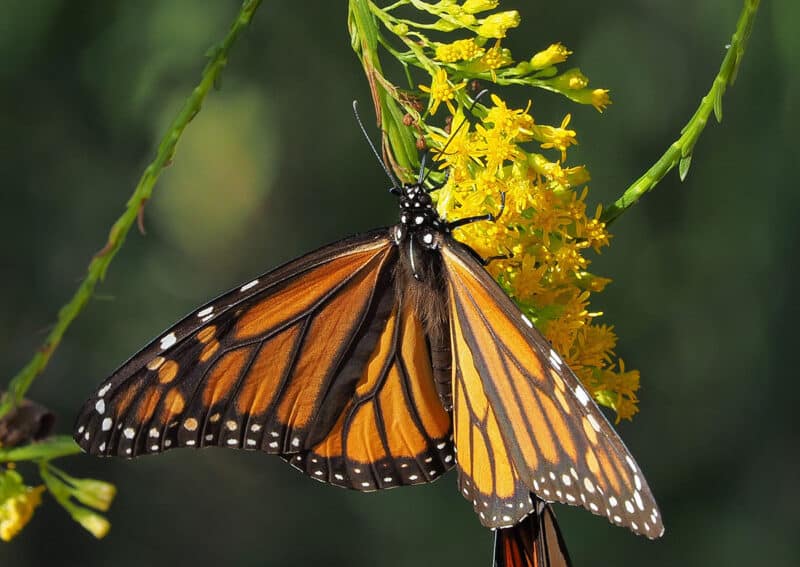Appreciating Nantucket’s Roadside Flora
by Dr. Sarah Treanor Bois
Director of Research & Education at the Linda Loring Nature Foundation
I am a terrible gardener. I try with my perennial garden beds, but the ecologist in me always wants to leave the plants to their own. Let them fend for themselves. Survival of the fittest is the theme. Needless to say, it’s the native plants that don’t need much water and the weedy species that persist. Anyone who has read my previous columns knows that I am not a fan of non-native invasive plants. However, the term “weedy” can be used for a number of plants that may be 1) native, but with fast growing, invasive tendencies (think poison ivy) or 2) non-native species that grow well in ruderal habitats such as roadsides, parking lots, and bike paths.
Nantucket gardens are a thing of beauty. The Nantucket Garden Club and the Nantucket Lighthouse School both offer tours of secret gardens in different parts of the year. The open space and conservation lands boast the rare sandplain grassland habitats home to various rare species and unique flora, some of which I’ve described here previously.
Today, however, I’m interested in the tough and hardy. Nantucket, for all of its summer beauty of delicate blossoms, can be a harsh place. Salt spray, high winds, storm surge, dry, sandy soils, and more deer than a plant can handle all make this a formidable place for a plant to grow. On top of all that, think of the road edges and bike paths. The soils are compacted; they are sometimes run over, nibbled on by rabbits, pooped on by dogs, and peed on by the occasional cat. It’s a wonder anything can grow.
Let’s look at the strip of sandy soil between the bike paths and the road. It could be Polpis Road, Hummock Pond Road, or Madaket. Yes, these ruderal places can host invasive plants like spotted knapweed and scotch broom, but they can also be quite beautiful this time of year. The wildflowers and small shrubs here provide an important habitat for many species of wildlife. Like many plants in this weedy category, they are survivors.
A few weeks ago I wrote about milkweeds. The common milkweed thrives in these edge habitats. Right now, as you drive around Nantucket, the blossoms have mostly faded, but the monarch and milkweed tussock moth caterpillars are munching away at the remaining leaves. Just because a plant is no longer blooming doesn’t mean it isn’t still contributing to its surrounding habitat.
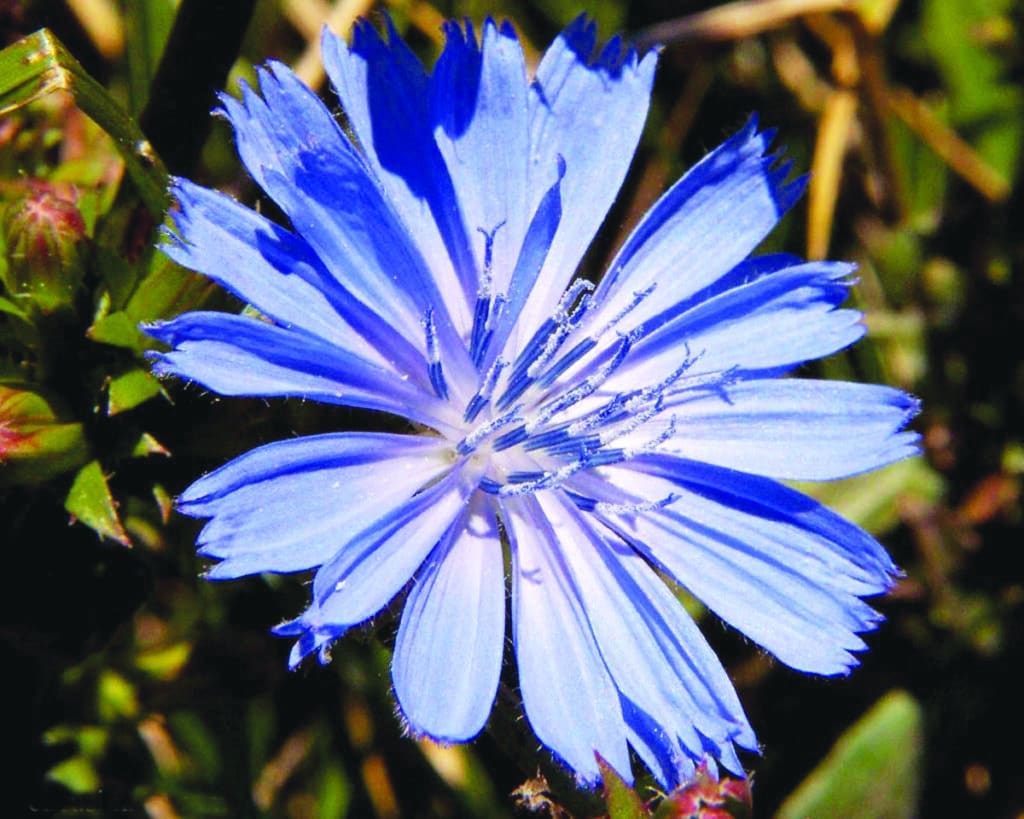
One obvious blossom right now is the pale blue chicory plant. Chicory (Cichorium intybus) is not native, but it has become naturalized: fitting in among the native plants without causing “harm.” Native to the Mediterranean, chicory has been used as a food plant since ancient Egypt. I had the famous chicory coffee in New Orleans a few years ago—it had an earthy flavor that added to the sense of place. Chicory leaves can be a bitter addition to various salad mixes. Aside from the edible parts, of which there are many, chicory is most obvious now while flowering. The bright blue composite flowers are a favorite of many pollinators. The wind-dispersed seeds are favored by birds like goldfinches. The blooms can be seen through to October and they add nice color to a wildflower bouquet.
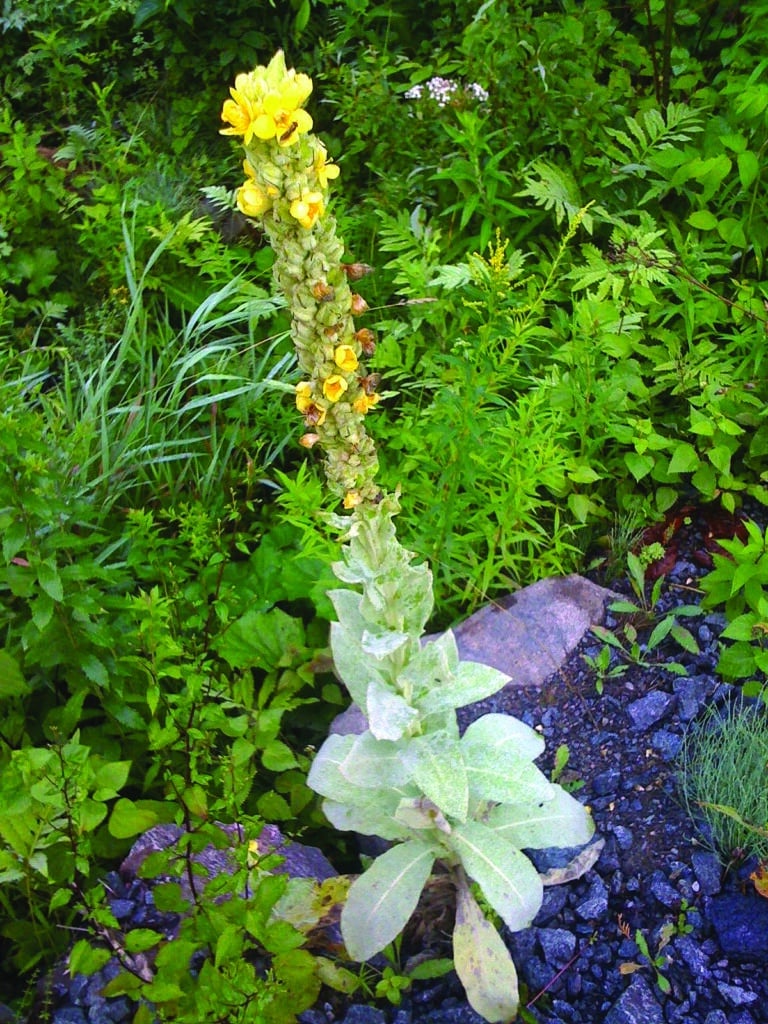
This last weekend, I was walking the Polpis bike path in search of another invasive plant when I caught a glimpse of a woodpecker (likely a hairy woodpecker) on a common mullein plant. The mullein had finished flowering a week or so ago, and I assumed the woodpecker was going for the insects on the seeds. It was an unusual sight, as I think of woodpeckers on trees not on herbaceous plants, but the woodpecker did its thing for a full five minutes before flying off. Great mullein (Verbascum thapsus) is another nonnative that has naturalised in New England. It was brought to the US from Eurasia in the mid 1700s, apparently as the source of a fish poison. It is easy to identify with its nearly 6-foot-tall flowering stalk covered in small, butter yellow flowers. The large, basal leaves are soft and felt-like. A friend of mine likes to note that these leaves are “nature’s toilet paper,” useful in a pinch. Apparently, mullein is known to ward off evil spirits—also good to know in a pinch. And the tall stems have been used to make torches, but please leave them be.
Another yellow blossom found along the roadsides right now is the common St. John’s-wort (Hypericum perforatum). Like the previous two species, common St. John’s-wort is not native, but has been long naturalized in our area. Native Americans used this flowering perennial to treat a variety of medical conditions, and today it’s a commonly-used herbal remedy. The sunny yellow flowers are about one inch across and there are multiples on each stem. The reddish stem contrasts with the yellow-green leaves. St. John’s-wort flowers are pollinated by bumble bees and some flies. However, it doesn’t produce any nectar, so it’s not good for other pollinators looking for a meal. If cultivating, know that St. John’s-wort spreads aggressively and can be difficult to get rid of.
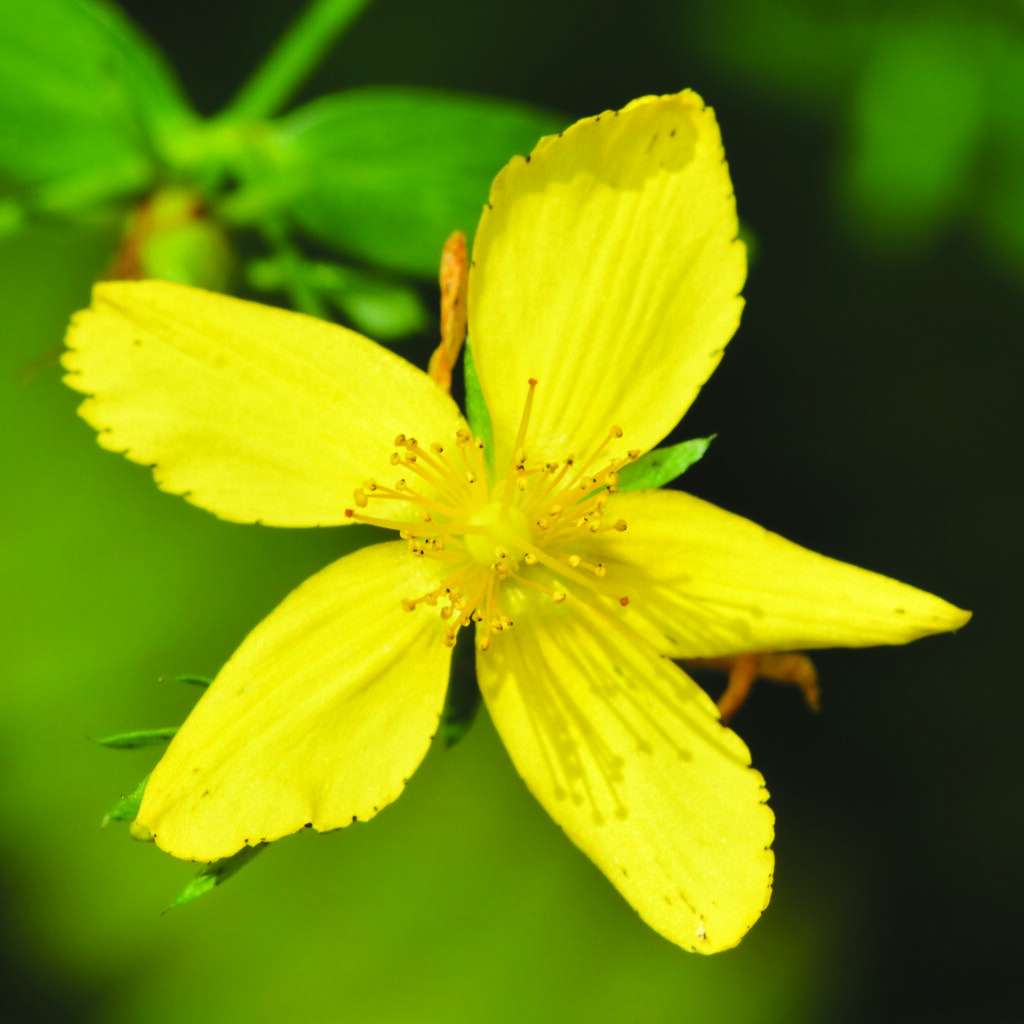
In some of the slightly wetter roadside areas, the orange-flowering jewelweed (Impatiens capensis) can be a common sight. This non-native actually is quite invasive, crowding out native species and displacing them. It can be useful, however, as a treatment for poison ivy. The juice that comes from the crushed leaves and stems can sooth skin affected by bug bites and poison ivy. The sunny orange flowers are trumpet shaped with tiny reddish freckles on the petals. I do advocate pulling this plant out, but I have to admire its tenacity. It has one of my most favorite forms of seed dispersal. The seeds are found in pod-shaped, green capsules. When mature, the seeds pull from the sides of the pod causing it to explode – a mode known as “ballistic seed dispersal.” Not surprising once you know one of the other names for jewel weed is “touch-me-not.” I’ve never tried it, but the seeds are apparently edible and can add a nutty flavor to salads.
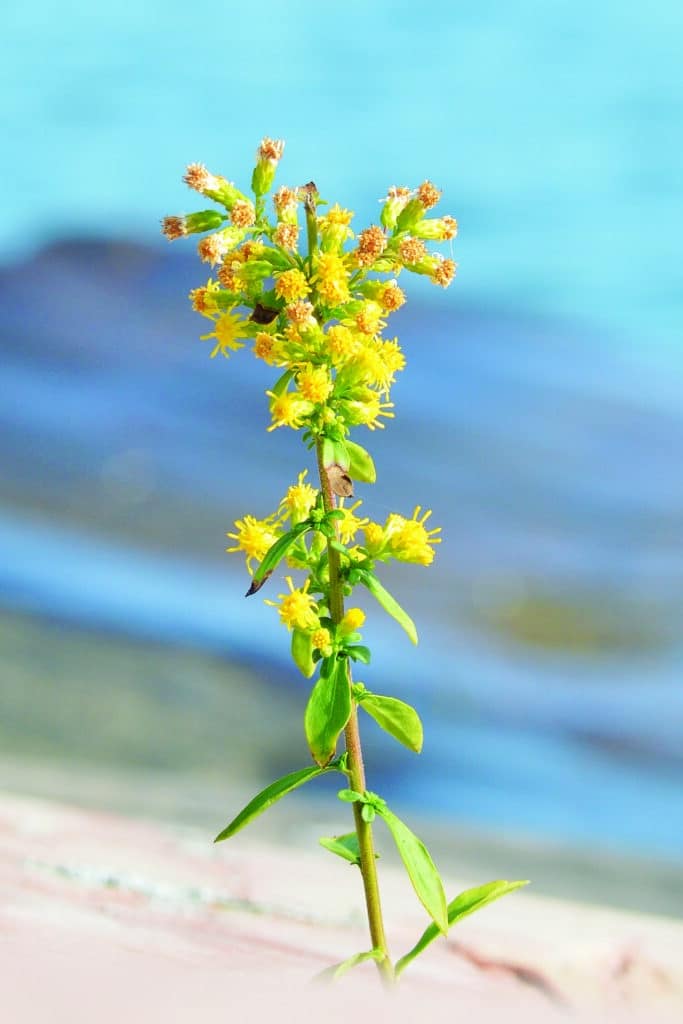
A common, native plant of these sandy, unforgiving areas are our native goldenrods (Solidago sp.). There are some 14 species of goldenrod found on Nantucket. They are, by far, the most important nectar source for native bees and butterflies during August and September. They also provide food, in the form of seed, for songbirds and small mammals. Contrary to popular thinking, as insect pollinated plants, goldenrods do not cause allergies. They are much maligned for this mistaken identity. The actual culprit of fall allergies is common ragweed whose insignificant greenish flowers produce windblown pollen around the same time the goldenrods are blooming. One of the primary goldenrods along road edges would be seaside goldenrod (Solidago sempirvirens), whose tough, waxy leaves tolerate saline soils and salt spray. Other common goldenrod species of such ruderal areas include Canada goldenrod, downy goldenrod, and gray goldenrod.
Many other species enjoy these roadside and bike path habitats: Queen Anne’s lace, poison ivy, red clover, and various grasses, just to make a few. While I would love to see more natives in these spaces, the species that are growing here are providing food and shelter for birds, insects, and small mammals. We have to remember that plants that thrive in these ruderal areas love disturbance and laugh in the face of mowers and weed whackers, often sprouting back larger and with more flowers after a cut.
In addition to providing food for wildlife, plants of these areas help us by using the water runoff. When roadways get waterlogged, the runoff can be physically held in natural areas and filtered through the soil. Plants of ruderal areas are tolerant of the runoff waters and many are resistant to salt water.
So go take a slow drive or bike ride around the island and admire the wild and tenacious plants that call the edge home. These tough and hardy plants could use a little recognition.

